Your pregnancy yoga starter guide
Whether you’ve tried yoga before or you are new to the practice, we spoke to yoga guru Janet Balaska for the lowdown on the benefits of this popular form of prenatal exercise.
Why should mums try pregnancy yoga?
According to Active Birth Centre’s founder Janet Balaskas, “Your body changes dramatically during your 40 weeks of pregnancy, taking its toll on your joints, stomach muscles and pelvic floor.”
It’s no surprise then that gentle exercise during pregnancy is a great way for expectant mums to help their bodies cope with all these changes. In fact, there are all sorts of benefits of pregnancy yoga—from helping you have a better birth experience and recovery afterwards to potentially helping you fit back into your pre-pregnancy clothes more quickly.
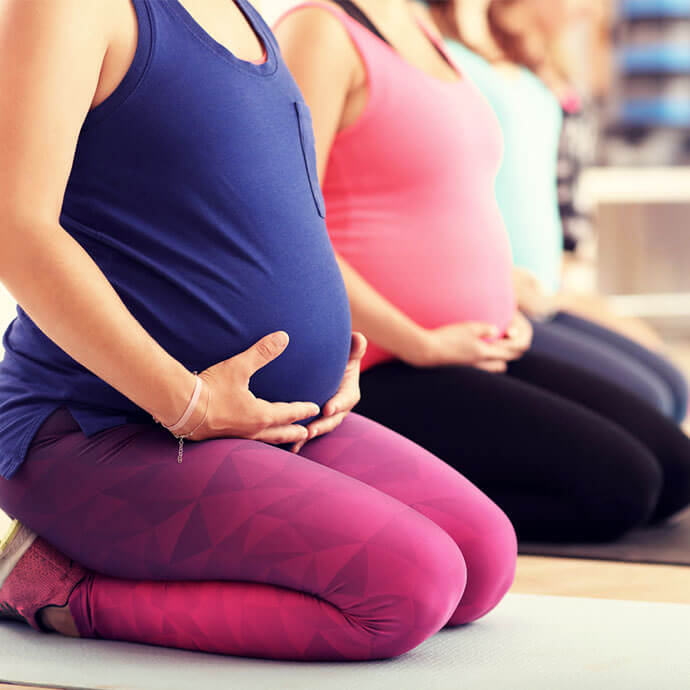
Pregnancy yoga benefits
“Yoga in pregnancy is great for improving body suppleness and it also stretches and supports muscles that become tight and tense as you adjust to carrying your baby’s weight,” adds Janet.
“Yoga also offers greater benefits from its relaxing and meditative breathing techniques. It is excellent at helping you learn and use postures such as kneeling or squatting that will become invaluable during labour and birth.”
There are several pregnancy yoga benefits.
- It increases energy levels and blood flow, releasing endorphins, the ‘happy hormones’ that help your mental health
- It improves muscle tone and posture, reducing backache and helping with positions for labour and birth
- It reduces constipation
- It helps you sleep and increases lung capacity, helping you breathe more easily
- It improves circulation, reducing bloating and swollen ankles
Janet continues: “Pregnancy yoga also helps your baby to grow, taking a good oxygen supply to the womb, encouraging healthy development and making a good birth more possible, reducing potential complications and the need for interventions.” Taking part in a local yoga class is also a great way to meet other new mums-to-be in your area.
What is prenatal yoga?
Yoga is a series of poses and exercises, based on an ancient form of movement originating 5,000 years ago in India, that helps with flexibility, strength and breathing.
It aims to improve not just physical wellbeing but mental health during your pregnancy too. Studies have shown that it’s a safe and efficient way to exercise and that it can be beneficial for people with high blood pressure, heart problems, back pain, stress and depression.
Janet explains that “Pregnancy yoga or prenatal yoga uses many of the same techniques especially adapted, so that all classes and poses are suitable for pregnant women.”
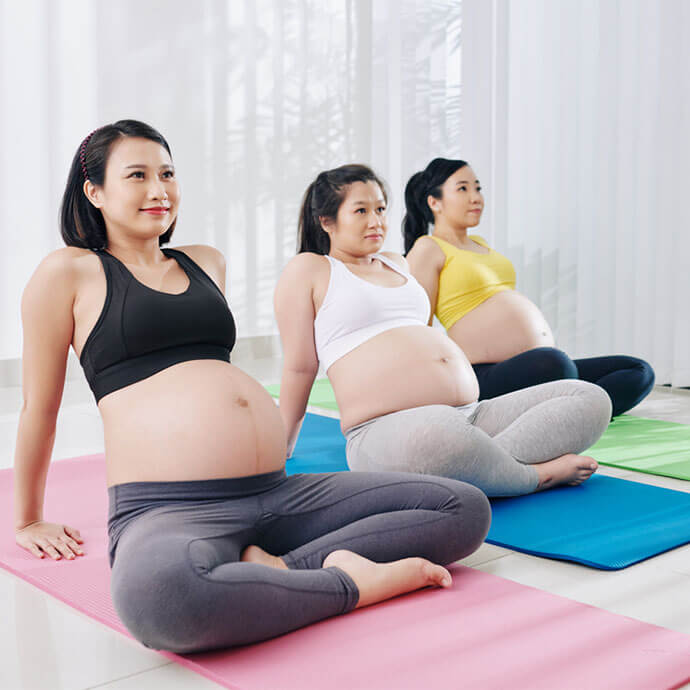
What happens during a prenatal yoga session?
In a typical yoga class for pregnant women (which might be specialist prenatal, hatha or restorative yoga), there will be several elements that you will be encouraged to take part in:
Breathing
You are shown how to breathe slowly and deeply. Breathing techniques not only help with breathlessness in pregnancy but can also be used as labour and birth breathing techniques too.
Stretching
You will be shown how to gently stretch limbs and muscles and move parts of your body through their comfortable range of motion.
Postures
You will be shown a variety of positions or postures that help you increase flexibility, strength, and balance. You might also be shown potential birth positions.
Relaxation
Classes end with a cool-down and relaxation that help you rest, take your heart and breath back to resting rates and help your body to absorb the benefits of the class.
Today, prenatal classes are also offered online where you can do a relaxing class in the comfort of your own home that can be accessed from anywhere.
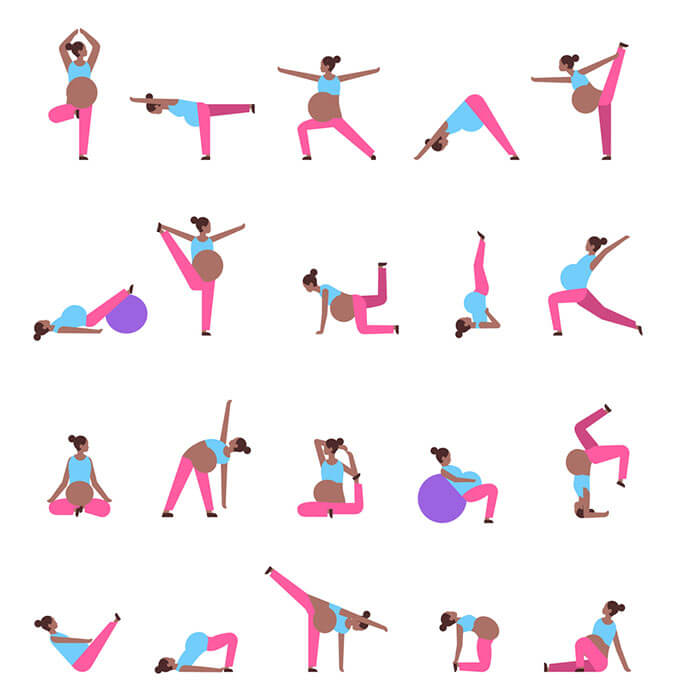
Some of the best yoga poses for pregnant women
Pregnancy yoga is good for all sorts of different parts of your body—but some poses are particularly good at stretching those muscles and helping with aches and pains.
Cat/Cow kneeling pose
Great for warming up the body at the start of a class. These poses can be used on their own to help backache.
Goddess sitting pose
Opens the hips and pelvis, strengthens the legs and helps with balance. This pose can help prepare your body for being in this position during labour.
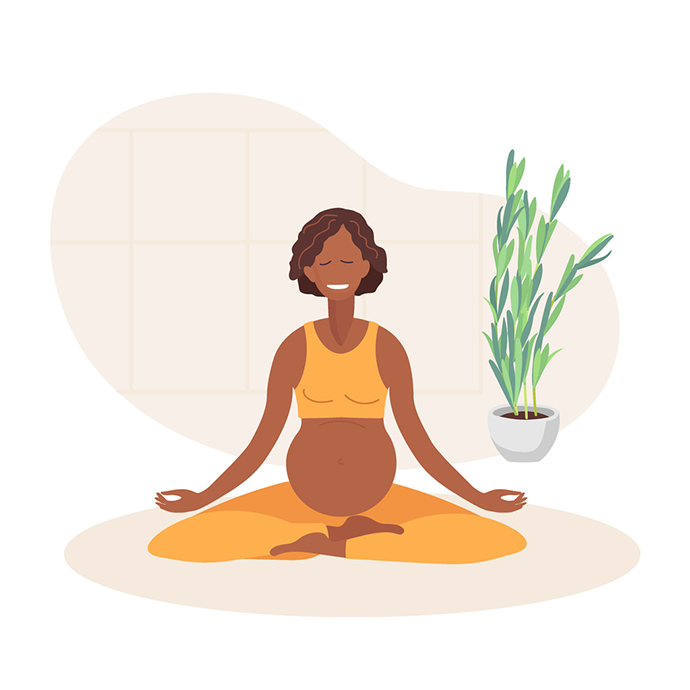
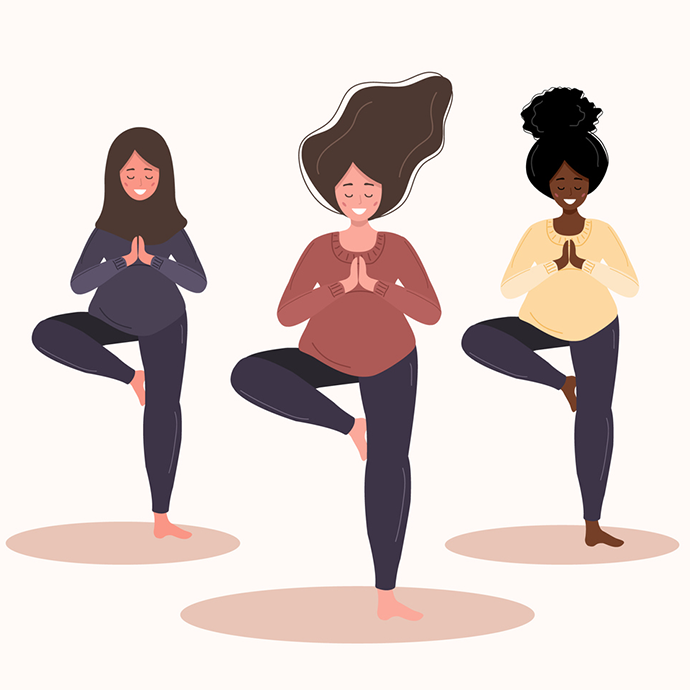
Balancing standing poses
The standing balance pose is ideal for strengthening muscles around the hips and helps with balance.
Abdominal and pelvic floor exercises
Having strong abs will help with back pressure and posture. A strong core will help the pelvis as the bump gets heavier. Pelvic flooring training will help the body cope with the weight of the baby and help reduce stress incontinence after the birth.

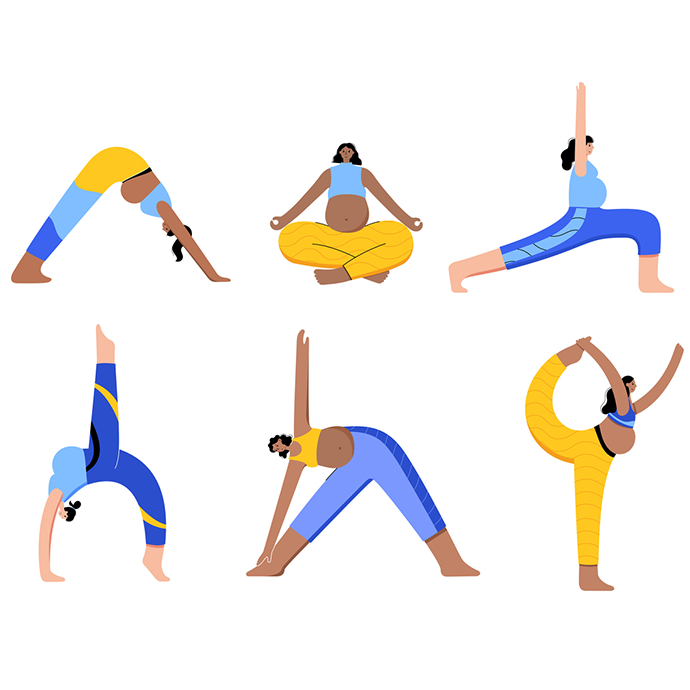
Downward dog (or Standing dog for late pregnancy)
A full body stretch that stretches the leg muscles and helps to release the shoulders and upper back. Helps reduce stress and anxiety. Not recommended in later pregnancy. During third trimester, this can be replaced with Standing dog.
Bound angle pose
A seated pose that strengthens and opens the hips, improves leg flexibility and relaxes the pelvic floor.
How to keep safe at prenatal yoga
Pregnancy yoga can be very good for you, but make sure you speak to your doctor or midwife before starting any new form of exercise. If you might be at risk of a premature birth, it might not be recommended. If they give you the go-ahead, it’s fine to get started but make sure you keep safe.
To keep safe, remember these six top tips:
1. Choose a class that is gentle and relaxing
Never push yourself and avoid going beyond your comfort zone in any movement. Strenuous forms of yoga are not suitable for pregnancy.
2. Don’t overdo it
If you’ve never been to a yoga class before, start off gently and aim to improve slightly each time.
3. Be realistic
You may have work, family and other pressures, so try to fit in a little of the yoga you remember each day – preferably 15-30 minutes. This should also help you wind down and sleep better.
4. Stay hydrated
Make sure you drink enough water and have a glass of water after the class.
5. Always speak up
If you have any warning signs such as pain or discomfort, stop and ask the teacher for advice.
6. Avoid poses not suitable for pregnant women
There are some poses, such as lying on your tummy, flat on your back, back arches and inverted postures that aren’t advised when you’re expecting. Twisting can also be tricky, so only modified poses should be used.
What to bring to your pregnancy yoga class
Before your first pregnancy yoga class
It’s worth checking ahead and asking your yoga teacher what to bring to your first class. Most yoga classes require you to bring a yoga mat, a towel, and some water, but your teacher may also suggest a cushion to make some positions easier. Some teachers will also provide blocks, yoga belts and birthing balls.
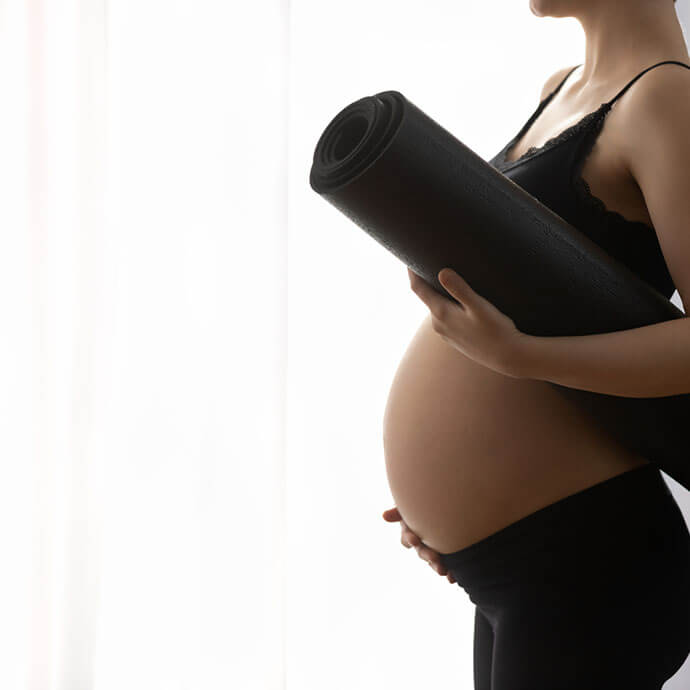
Our expert Janet cautions: “Make sure your teacher knows of any medical conditions or injuries you might have. Always discuss any aches and pains with them and discuss ways you can target specific problems. Above all, enjoy it - it’s a wonderful way to be fully present and to bond with your unborn baby!”
Safety note: Make sure you stay safe when exercising. You’re at a time when your centre of gravity is changing and pregnancy hormones mean ligaments are looser and joints stretchier. Make sure your instructor knows you are pregnant and if possible, join a specific class for pregnant women.
Janet offers online pregnancy yoga classes via live streaming where she demonstrates and gives the instructions personally.
Get expert parenting advice from day one!
If yoga isn’t your thing, there’s plenty of other safe ways to exercise when you’re pregnant – read our guide to The do’s and don’ts of prenatal exercise.

 your parenting partner
your parenting partner